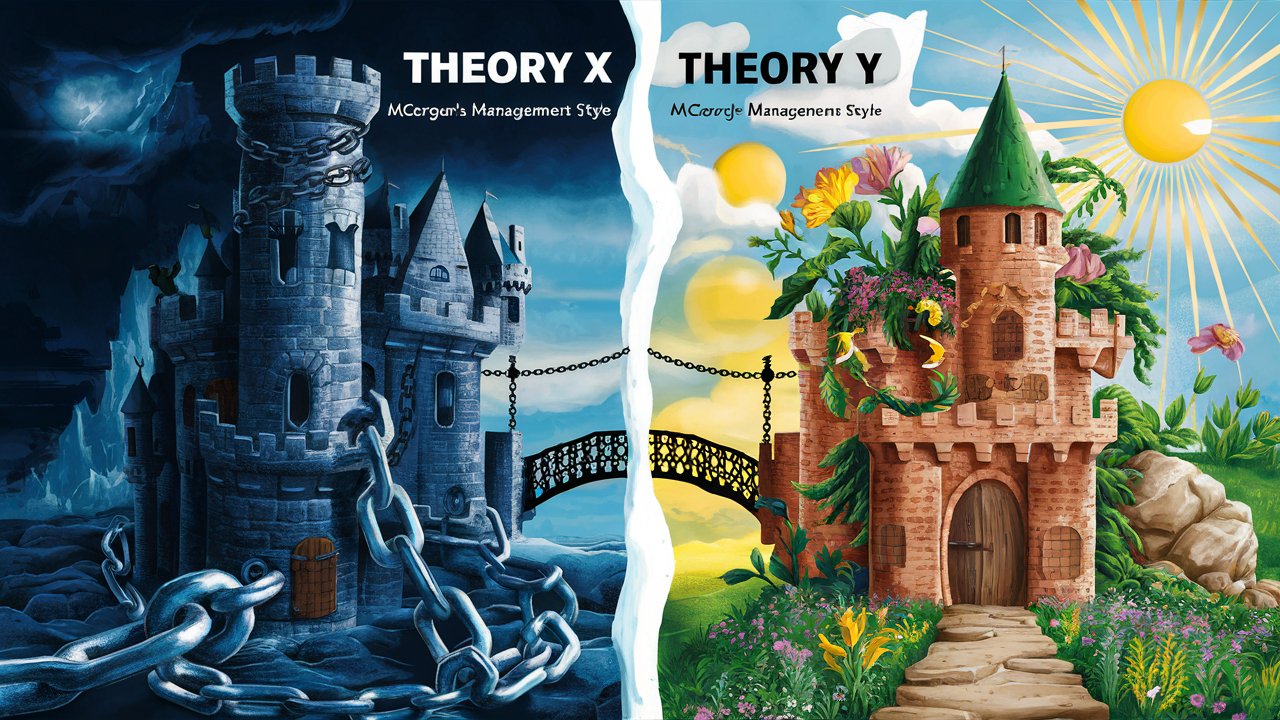Imagine you have two different kinds of teachers in your school.
Theory X
Theory X is like a strict teacher who thinks students don’t like to do their homework and won't study unless they are forced to. This teacher believes:
- Students are lazy and don’t want to work.
- They need to be watched all the time.
- They need to be punished if they don’t do their work.
So, this teacher might give a lot of rules, watch students closely, and use punishments to make sure they do their homework.
Theory Y
Theory Y is like a friendly teacher who believes students are naturally curious and want to learn. This teacher thinks:
- Students like to do their homework and learn new things.
- They can be trusted to work on their own.
- They just need support and encouragement.
This teacher might give students more freedom to choose their projects, trust them to do their work without constant supervision, and give them lots of praise and encouragement.
Overall
- Theory X: People need to be controlled and pushed to work hard.
- Theory Y: People are motivated and want to do a good job if you trust and support them.
So, McGregor’s theories are about two different ways managers (or teachers) can think about their employees (or students) and how these beliefs affect the way they manage them.
Douglas McGregor's Theory X and Theory Y are two contrasting theories of human work motivation and management. Developed in the 1960s, these theories describe two different views of individuals (workers) at work and the implications for managerial behavior.
Theory X
Theory X assumes that employees are inherently lazy, lack ambition, dislike responsibility, and prefer to be directed. Managers who hold this view believe that employees need to be closely supervised and controlled. This perspective leads to an authoritarian management style with strict controls and a focus on achieving organizational goals through punishment and rewards.
Key characteristics of Theory X:
- Dislike of Work: Employees inherently dislike work and will try to avoid it.
- Lack of Ambition: Employees avoid responsibility and prefer to be directed.
- Need for Control: Employees require close supervision and control.
- Motivation through Punishment and Rewards: Managers believe that coercion, threats, and monetary incentives are necessary to motivate employees.
Theory Y
Theory Y presents a more optimistic view of human nature, assuming that employees are self-motivated, enjoy work, and seek out responsibility. Managers who adopt this view believe that employees can be trusted to work towards organizational goals without the need for close supervision. This perspective leads to a more democratic and participative management style.
Key characteristics of Theory Y:
- Enjoyment of Work: Employees find work to be as natural as play or rest.
- Self-Motivation: Employees are capable of self-direction and self-control.
- Acceptance of Responsibility: Employees seek and accept responsibility.
- Creativity and Ingenuity: Employees possess creativity and ingenuity that can be applied to organizational problems.
- Motivation through Empowerment: Managers focus on creating a supportive environment that encourages personal growth and development.
Implications for Management
The implications of McGregor's Theory X and Theory Y are significant for management practices.
- Theory X Management:
- Rigid structure with strict rules and policies.
- Close supervision and monitoring.
- Focus on compliance and meeting deadlines.
- Use of external rewards and punishments to motivate employees.
- Theory Y Management:
- Flexible and participative work environment.
- Delegation of authority and responsibility.
- Emphasis on job satisfaction and personal growth.
- Encouragement of innovation and creativity.
Application in the Workplace
Understanding and applying these theories can help managers develop strategies to effectively motivate and manage their employees.
- In environments where Theory X might be more applicable (e.g., repetitive or monotonous tasks), managers might focus on clear instructions, supervision, and performance-based rewards.
- In environments where Theory Y is more applicable (e.g., creative or knowledge-based tasks), managers might focus on empowering employees, encouraging participation in decision-making, and fostering a collaborative work culture.
Ultimately, McGregor's Theory X and Theory Y highlight the importance of managers understanding their assumptions about human nature and how these assumptions influence their management style and organizational culture.